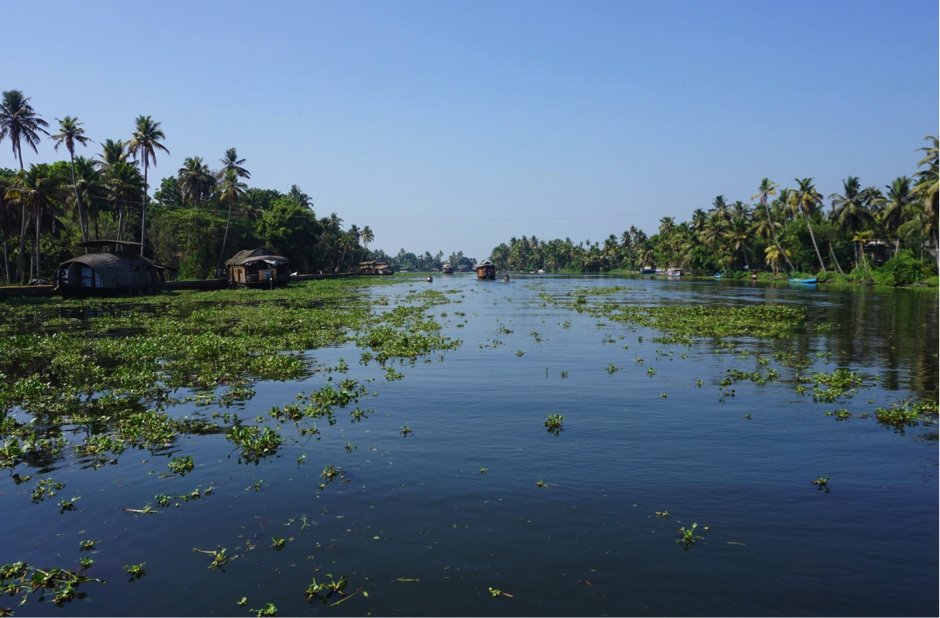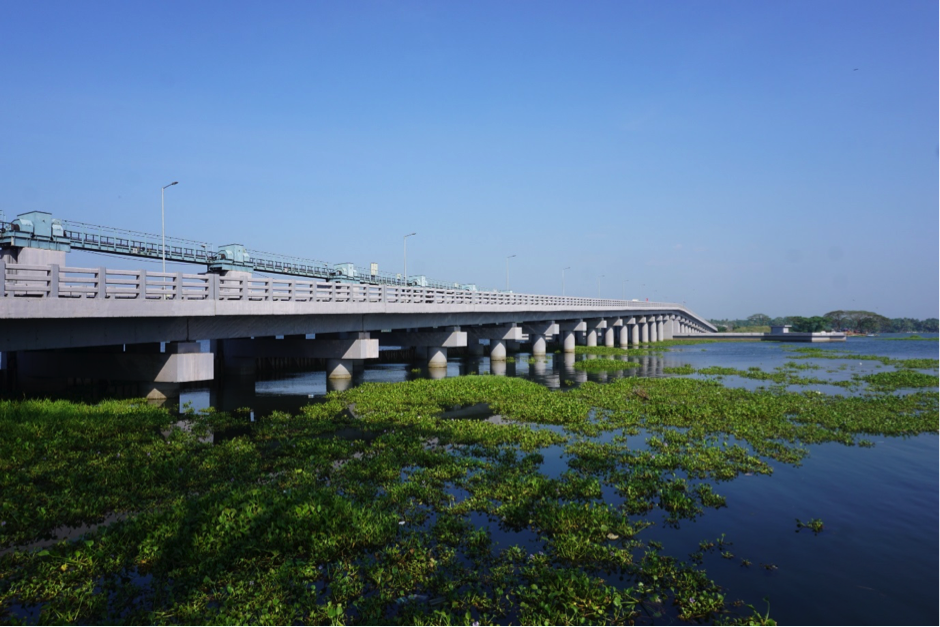By Elly Williams
Bachelor of Engineering / Bachelor of Science (Environmental Studies)

Drifting down the Backwaters by houseboat, it’s easy to appreciate the lure of the Kerala region – picturesque canals lined with coconut trees, the reflection of the sky in the waters’ surface interrupted only by beautiful floating aquatic plants and quaint wooden boats.
However, there is more to this scene than meets the eye.
This network of lakes and canals known as the Vembanad is in fact a complex ecosystem dependent on environmental intervention and conflicting stakeholder relations.
The Vembanad is the largest tropical ecosystem of the Indian south-west coast. Transformed by human activity, it is estimated that two-thirds of the original lake area has been converted into rice paddy, and the installation of the saltwater barrage Thanneermukkom Bund in 1974 has permanently altered coastal processes in the region. The coastal ecosystem naturally alternates between a freshwater system during the monsoon and a brackish environment during the dry season. The barrage extends the freshwater period to April through December to prolong the rice-growing season, while restricting the brackish period to just four months.

An estimated 1.6 million people depend on the Vembanad for food, drinking water and income. The fishing, clam collecting, agricultural and tourism industries all depend directly on the lake, but demand different conditions to thrive.
For example, closing the barrage from April to December provides freshwater for multiple rice-growing seasons. However, clam populations require saltwater inflows to facilitate reproduction. Restricting the saltwater period shortens the clam breeding season, resulting in depleted clam populations south of the barrage. Both industries contribute substantially to India’s food supply, with the Vembanad supplying 16% of rice grown in the Kerala region and over 60% of clams in India.
Furthermore, the barrage was intended to be opened for a full year once every four years to hydrologically balance the ecosystem. However, the barrage has never remained open for more than a few months, leading to a build-up of toxins, nutrients and pollution from agriculture, urban development and tourism. This has contributed to lake deterioration, stakeholder stress, biodiversity loss and exacerbated growth of the water hyacinth weed resulting in hypoxia. Where over 150 species of fish have been seen in the Vembanad in the past, only 117 have been recorded recently.
With these tradeoffs and stakeholder conflicts at play, environmental management in the region is highly complex. This is where grassroots organisations such as the Ashoka Trust for Research in Ecology and Environment (ATREE) and the Lake Protection Forum come in.
ATREE engages in a number of campaigns and activities that promote conservation in the Vembanad. One successful initiative involves the construction of fish sanctuaries (Matsyathavalam) in designated no-fishing zones to provide a protected breeding space for fish.
Our group had the opportunity to construct fish sanctuaries with ATREE and the Lake Protection Forum. We drove bamboo stakes into the lake floor, tying fresh bamboo stalks to the base. As the fresh leaves decay, nutrients are released that attract a variety of species, including the popular Pearl Spot, as well as providing protection from predators.
This exciting experience provided insight into how organisations like ATREE and the Lake Protection Forum implement low cost conservation solutions to combat ecological conflicts in the Vembanad.
Conflicts between the rice, fishing and clam collecting industries continue and the future of the management of Thanneermukkom Bund is uncertain. I hope someday to see the stakeholder interests and ecology of the Vembanad reach a balance that reflects the serenity of the beautiful Backwaters.


